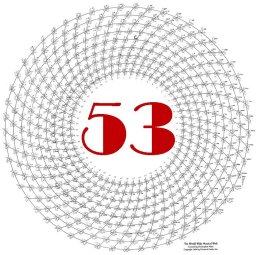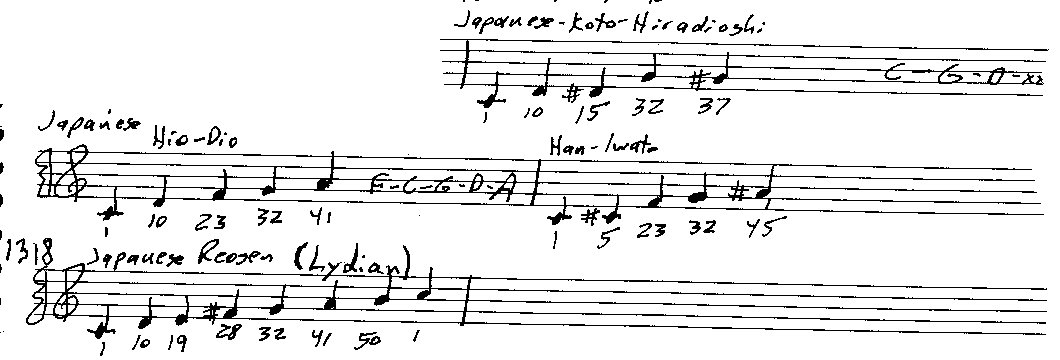Next Page: 7/2 – Ancient Greece
Other East Asian Musical Scales
Japan
The signs of rain in the heart that won’t fade away don’t sing a song that makes you wither but a song that makes you shine.” — Royz – Noah, Japan
A small sample of this chapter:
Japan’s culture has been deeply influenced by China for many centuries. Japan had its own distinctive culture, but the Japanese imperial state used Chinese language and imported culture. Gigaku, Chinese masked drama, entered Japan some 1500 years ago.
Gagaku music featured music by wind, strings and percussion. Some of the instruments like koto and biwa and the drums are related to instruments used in other genres, but others, like the nasal hichiriki and the harmonica-like sho are used only in Gagaku and are a part of its distinctive sound. Rimpa-gaku also found its way into the southern part of the Vietnam peninsula (“pieces of the left”). Pieces from Korea are called “pieces of the right”…
Biwa music also emerged from itinerant blind musicians who were largely rejected by society. The biwa itself is a lutelike instrument, and these musicians sang epic poems often taken from the Tales of the Heike and to support the spirit of samurai. The instrumental music is rather elaborate.
Figure 6-4a
Japan biwa scales
And here are just a few of the wildly exotic scales in this chapter!
If you would like to learn more about this chapter, “Other East Asian Musical Scales” with dozens of ancient scales from Japan, Vietnam, Korea and more, you can buy the entire book, The Grand Unified Theory of Music, in pdf form for $25 with hundreds of embedded musical examples of scales and chords from all over the world HERE.
A free introduction to what The Grand Unified Theory of Music offers is on this website and includes both text and a few musical examples from each webpage. If you would like to learn more about this chapter and the full contents of this entire e-book, you can buy The Grand Unified Theory of Music for $25, with hundreds of embedded musical examples of scales and chords from all over the world — and ideas for how to set up your computer system —
HERE.
You’ll get a personalized password you can use to see the entire e-book. Inside the full book, you will also get a link to the complete pdf file of this e-book, which you can read on your Kindle or similar device. The links to the hundreds of mp3 sound files – the same ones you can hear on the website — will also be included. This is “Version 1.0” of The Grand Unified Theory of Music. Because it is an e-book, additions, corrections and improvements in the sound may be added at any time. The Grand Unified Theory of Music is Copyright © 2018 by Christopher Mohr. All rights reserved.
One person per password. Sharing this password with others is a violation of copyright. Do not allow others to use your password or link to the pdf file



